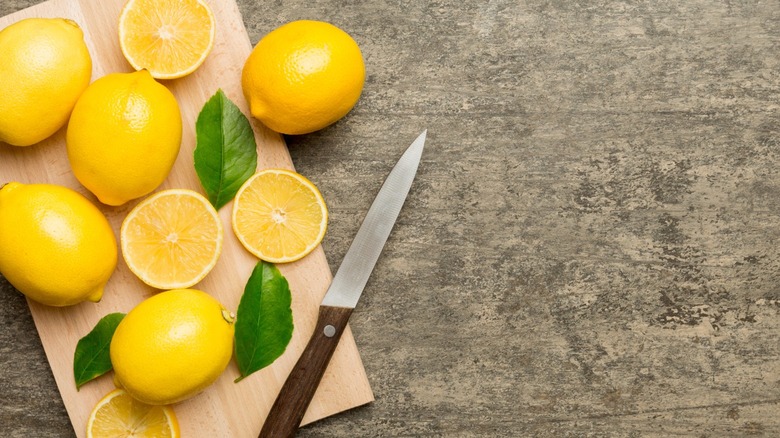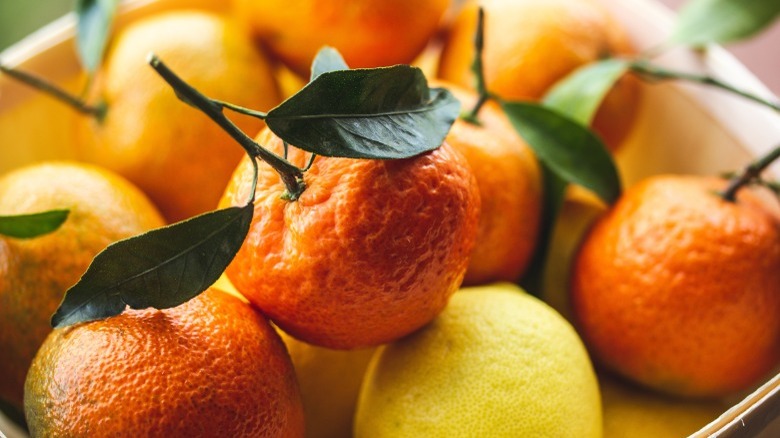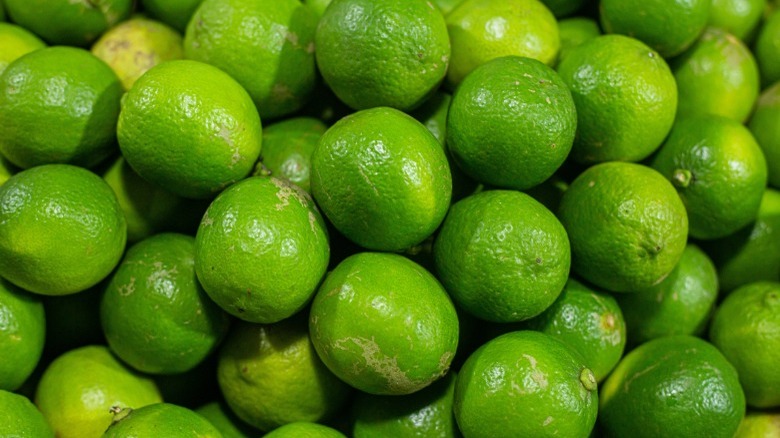Ever Wonder About What Makes Lemons Yellow?
Lemons are known for their lip-puckering sour flavor and their vibrant yellow shell, which encases the golden fruit within. But have you ever really wondered what gives the citrus its coloring?
If you've encountered a lemon tree, you might have initially mistaken the fruits hanging on each branch for limes — because lemons (and most citrus fruits) are actually green when they're still growing. The chlorophyll that produces this green pigment exists in all fruits that can be classified as one of the citrus varieties. However, as the fruit ages, chlorophyll is overtaken by other compounds called anthocyanins and carotenoids. Carotenoids, specifically, are responsible for the yellow and orange pigments that naturally emerge as the fruit continues to ripen (although some combination of them is present in the fruit regardless of its age).
In the United States, lemons typically mature in the colder weather of fall and winter, which speeds up the loss of chlorophyll and the transformation to yellow. A similar process occurs in tree leaves every fall. Chlorophyll is a light-loving photoreceptor, but as temperatures drop, leaves stop producing it, instead expressing the golden pigments created by the carotenoids in the form of stunning foliage.
Color comes down to the cellular level
So, what are these mysterious compounds that control the color of lemons? Starting with carotenoids, which produce that vivid yellow, these pigments are found in plants, algae, and photosynthetic bacteria, and play a role in the cellular processes of photosynthesis. There are over 600 types of carotenoids; when ingested by humans, they act as antioxidants, and some can be converted into vitamin A. Beta-carotene is one carotenoid that might sound familiar to you — it's found in carrots, and aids in eye health. As a lemon ripens and its chlorophyll breaks down, studies have shown that the composition of carotenoids within it changes. For example, alpha-carotene levels significantly decrease, while zeta-carotene and a compound similar to eta-carotene appear.
Anthocyanin, typically found in red, blue, and purple-toned fruits, is part of an antioxidant group called flavonoids, which are believed to help combat health issues related to inflammation or stress. Although it mainly contributes to the pigment of the shoots, floral components, and certain peels of very young citrus plants, anthocyanin is crucial to the pigmentation of other citruses — like the deep red of blood orange flesh. In general, citrus fruits exist on a pigment spectrum influenced by various factors, including compounds like chlorophyll, anthocyanin, and carotenoid, as well as genetics and the growing conditions of the fruit, which are major determinants of what color it will end up being.
Limes are green because they stay under ripe
Although we might think that green is a lime's natural, fully matured color, the pigment actually indicates that the fruit hasn't ripened, even by the time you pick it up in a grocery store. This is intentional, and has a lot to do with how limes are transported and regulated. These little green citruses are harvested in batches from their trees, not individually. Farmers strategically cull the fruit while still green because underripe limes travel better than their softer, more mature counterparts.
One of the most common type of limes sold in the United States is the Bearss lime — also known as the Persian lime — grown in Mexico. If picked when perfectly ripe, these limes would be in less than ideal condition by the time they traveled the great distance to your countertop. In reality, the citrus would turn yellow if allowed to ripen like a lemon. However, there are USDA regulations that actually list yellowed limes as a defect, so it's not surprising we don't see them much.
For limes, green is the way to go flavor-wise if you're looking for that sour punch. Green limes have the tartness that's expected of them, whereas limes that have been allowed to yellow are juicier and sweeter. Much like the unique flavor profile that sets Meyer lemons apart, yellow limes are also distinctly less acidic than their green counterparts.



